Misaki Town Walking Map (A city of history and culture)
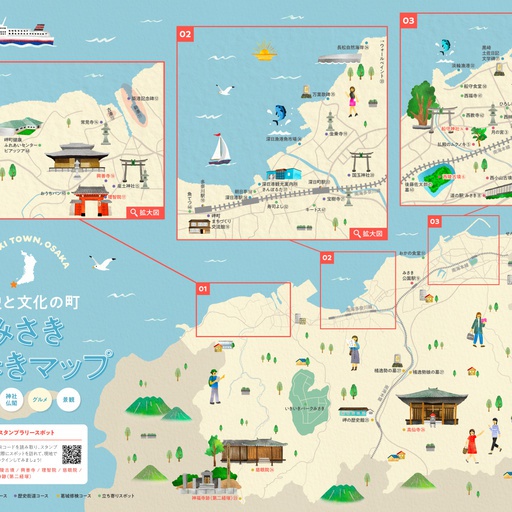
How about taking a leisurely stroll through Misaki Town, where history comes alive through cultural treasures and ancient burial mounds?
 Posted by西日本広域観光連携文化財活用岬町推進協議会Updated:
Posted by西日本広域観光連携文化財活用岬町推進協議会Updated: All spots information
54 spots
 Others
Others
Saifuku-ji Temple
![]() Others
Others

--> 見出し --> 4585, Tannnowa, Misaki Town, Osaka According to temple records, it was constructed in 1511. According to the Osaka-fu Zenshi ("Records from Osaka Prefecture"), the founder of this temple was the monk Zen-o. However, since Zen-o was part of the first generation of the Shimamoto family and received his wooden Buddhist monk license in 1810, he was probably not the founder, but someone who restored the temple. Many tera okuri shomon (certificate of family matters sent to a temple) remain among the documents held by the temple, suggesting that this temple was involved not only in the marriage of townspeople but of people in Kishu and Awaji as well.

--> 見出し --> Tannnowa, Misaki Town, Osaka Goto Sataro is the son of Goto Matabei, famous for the Siege of Osaka, and it is said that, even after the Edo shogunate permitted the prisoners of Osaka Castle to serve in the castle, he did not return to the warrior class and instead was adopted into the family of his bride, a peasant woman, in Tannowa, where he spent the rest of his life. -->

--> 見出し --> 3494−5, Fuke, Misaki Town, Osaka 営業時間--> 定休日--> TEL:072-492-2218 A cafeteria that primarily serves delicious seafood set meals.
Sushi Yoshi
![]() Others
Others

--> 見出し --> 1883−2, Fuke, Misaki Town, Osaka 営業時間--> 定休日--> TEL:072-492-2300 料金--> This sushi restaurant is committed to local products and live fish, and even has an enormous fish tank.
Okano Shokudo
![]() Others
Others

--> 見出し --> 4131, Tannnowa, Misaki Town, Osaka 営業時間--> 定休日--> TEL:072-494-3164 This restaurant offers set meals and rice bowls made with fresh seafood.

--> 見出し --> 4598, Tannnowa, Misaki Town, Osaka This shop is located in a renovated old Japanese-style house right in front of Tannowa Fishing Port. The specialty here is the enormous fried shrimp.
Mount Atago
![]() Others
Others

見出し --> Tannnowa, Misaki Town, Osaka http://www.town.misaki.osaka.jp/soshiki/toshi_seibi/sangyo/kannkou/leisure/spot/177.html Overlooking Osaka Bay, Kansai International Airport, and the Akashi Kaikyo Bridge in the distance, Mount Atago is famous for its spring flowers. 800 cherry trees bloom in early April, followed by 50,000 azaleas that color the mountainside in late April. The beautiful contrast between the red flowers, blue seas, white clouds, and spring green makes this a popular spot among visitors. Every year on April 29 (a national holiday), the Azalea Festival is held. There is a plaza atop the mountain where visitors can sit on a bench or spread out a picnic blanket for lunch. Nothing is more pleasurable than a meal overlooking the sea.
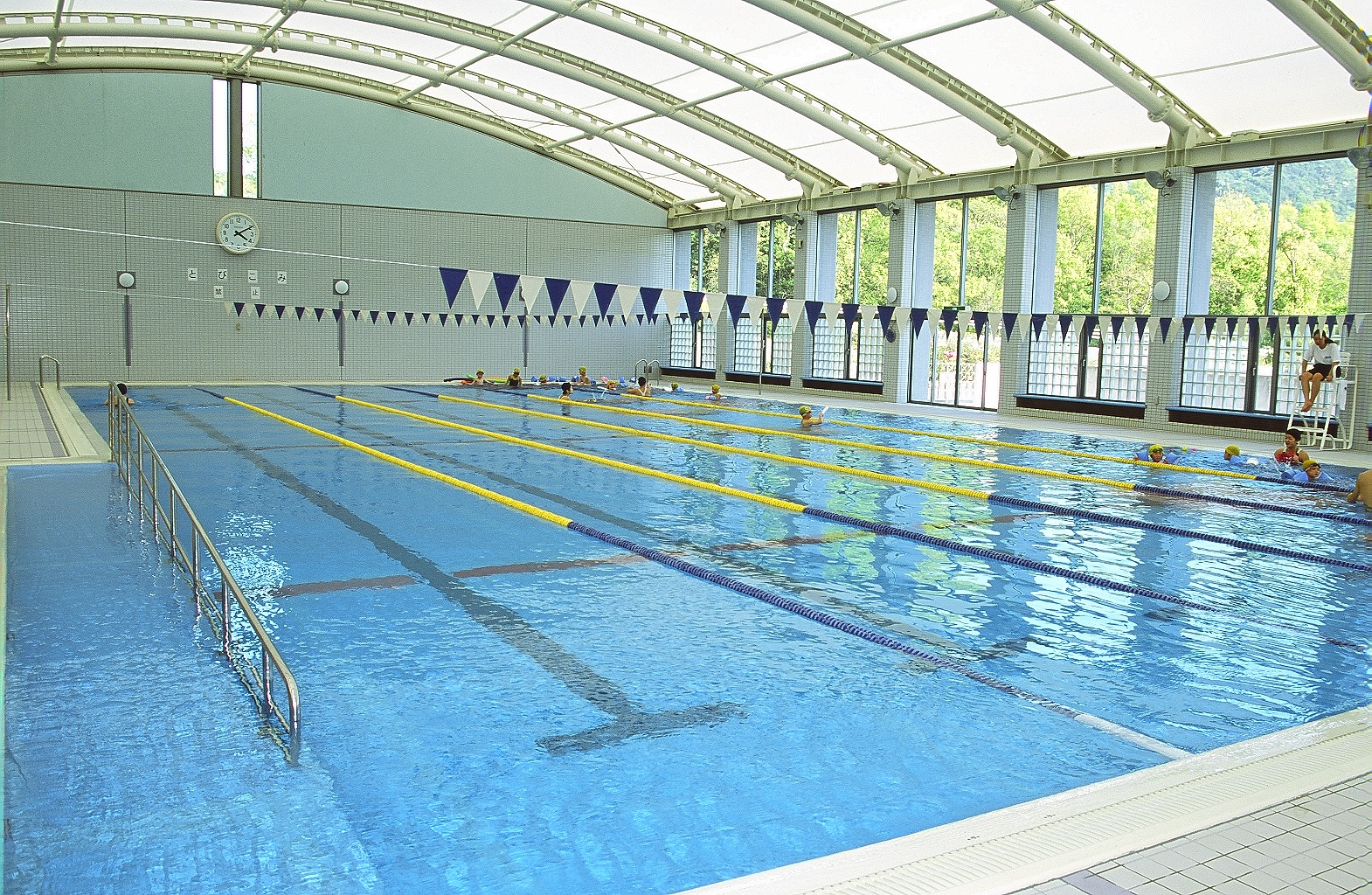
見出し --> 495−1, Tanagawa-tanigawa, Misaki Town, Osaka http://www.town.misaki.osaka.jp/soshiki/shiawase/tiikifukushi/piazza/index.html This municipal complex combines five facilities: baths, a heated pool, a common rest area, a welfare center, and an environmental study center. The bathing facility Yu-Yu Zone features baths, a Scandinavian mist sauna, and a high-temperature dry sauna. The Pool Zone features a heated pool shallow enough for toddlers, meaning even small children can play safely here. The Iki-Iki Life Zone, a kind of welfare center, has a playroom with heated floors, play equipment, picture books, and a piano. Outside is a multipurpose plaza where children and parents can play together.

--> 見出し --> 1504−2, Fuke, Misaki Town, Osaka https://www.instagram.com/cafe_kiitos2021/ Enjoy teatime in an artistic space.

--> 見出し --> 2326−8, Tanagawa-tanigawa, Misaki Town, Osaka This restaurant is attached to a fish merchant, letting you enjoy set meals and rice bowls made with fresh seafood.
Hiroshige Coffee
![]() Others
Others

--> 見出し --> 1478−1, Tannnowa, Misaki Town, Osaka 営業時間--> 定休日--> TEL--> 料金--> アクセス--> 自由項目--> 自由項目--> 自由項目--> 自由項目--> http://hiroshige-coffee.com/ リンク表記名 --> リンク表記名 --> Coffee and light meals are served here. Enjoy our distinctive coffee in a relaxing, at-home environment.
Sairin-ji Temple
![]() Others
Others

--> 見出し --> 4664, Tannnowa, Misaki Town, Osaka Built in 1469, this temple was called Henjo-in and was a branch of Negoro-ji Temple of the Shingon Sect of Buddhism, but, in 1516, under the reign of the Buddhist monk Gyoa Kakuto Seikan Osho, converted to Jodo Shinshu, the sect it remains in to this day. The principal image is a life-sized Amida Nyorai Buddha flanked by statues of Yakushi Nyorai and Shaka Nyorai.
Saikyo-ji Temple
![]() Others
Others

--> 見出し --> 4522, Tannnowa, Misaki Town, Osaka While details surrounding the foundation of this temple are unclear, it is believed to have been founded during the Azuchi-Momoyama Period (1568-1600). The principal image of the Amida Nyorai Buddha was found unscathed after Sengen-ji Temple on Iimori Hill burned down when Oda Nobunaga attacked the Saika forces in 1577, and is believed to date back to the Fujiwara Period (894-1185).
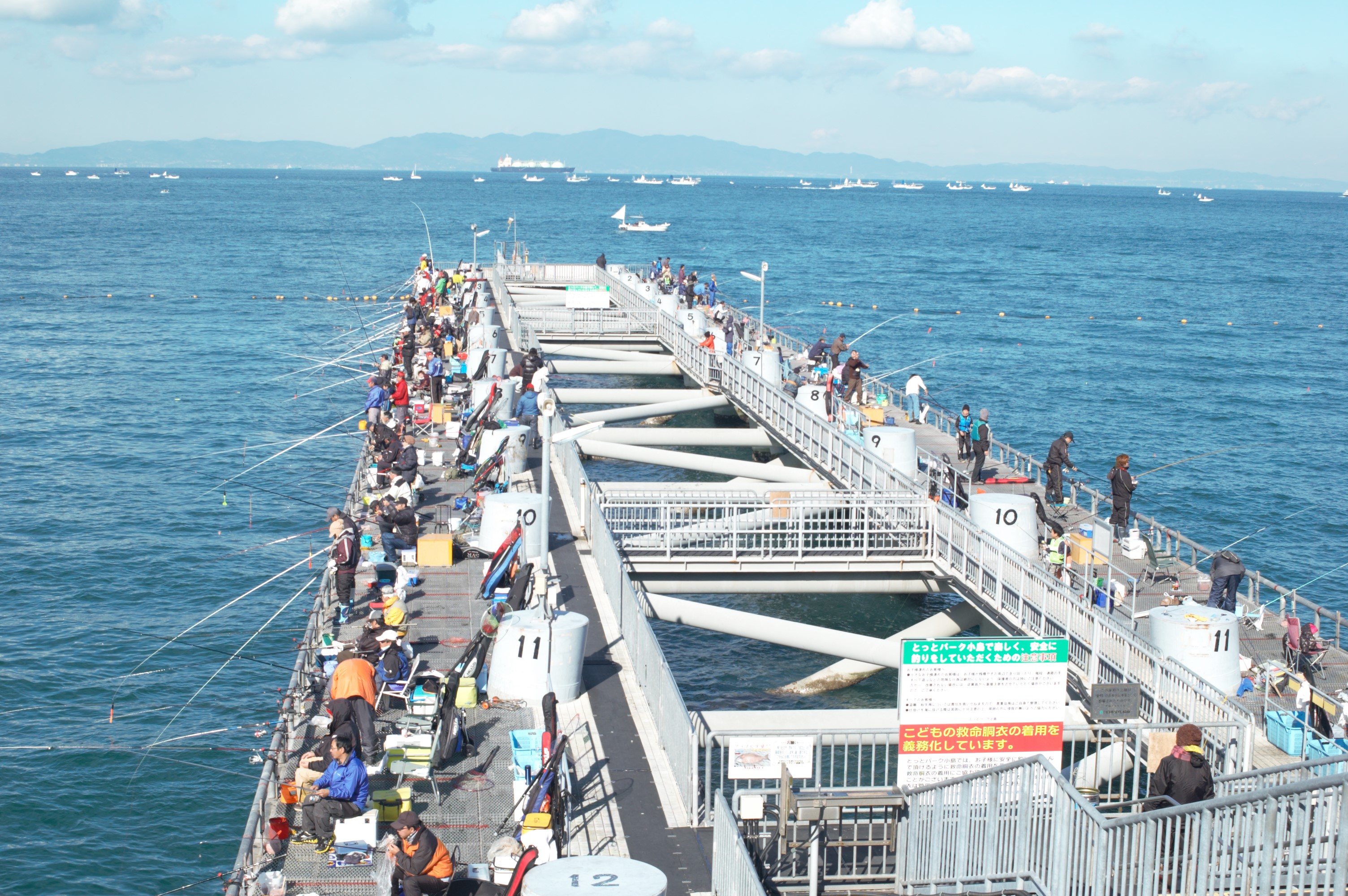
見出し --> 455−1, Tanagawa-kojima, Misaki Town, Osaka https://minnaga.com/totopark/ This is a sea fishing park on a shipping pier made from reclaimed land during Phase II of the construction of Kansai International Airport. Visitors can enjoy fishing for different species throughout the year. The entrance of the facility is lined with powerful ink rubbings of giant fish caught by generations of fearless fishers. The observation deck (free of charge) offers excellent views that children can enjoy safely. The circular dome on the shore is the restaurant Totto Shokudo, where you can savor Octopus Rice and Octopus Curry made from local octopus. Free parking (more than 100 spaces) is available, as well as lifeboats and flushing toilets. The winds here are strong, so don't forget to bring some protection against the cold.
 Seaside Dining Course
Seaside Dining Course
Kurosaki (Tosa Diary) Literary Monument
![]() Seaside Dining Course
Seaside Dining Course

--> 見出し --> 1381, Tannnowa, Misaki Town, Osaka This monument was erected on the Kurosaki Coast in Tannowa on May 1990. "1st day of the 2nd month. In the morning it rained. It stopped around noon and so we sailed out from a place called Nada in Izumi (Tanagawa). Out at sea, there was no wind or waves, just like yesterday. We passed a pine grove in Kurosaki ('Black Cape'). The place name contains the word 'black', the color of the pines is green, the waves on the shore as white as snow, and the color of the shells is an earthy red. The only one of the five colors is missing.” The name Kurosaki, means "black cape", the pines were green, the waves against the shore white, and the shells that are collected and dyed turn a dark vermilion with a hint of purple, meaning the only missing color of the five classic colors (red, blue, yellow, white and black) was yellow. This is said to be a metaphor for the declining state of the Ki Clan.
Tannowa Fishing Port
![]() Seaside Dining Course
Seaside Dining Course

--> 見出し --> 4582, Tannnowa, Misaki Town, Osaka This is a famous fishing spot among fishing enthusiasts. The sandy seabed makes this place excellent for catching Japanese whiting and also for sabiki (flasher rig) fishing. Be aware that line fishing toward the inside of the harbor is prohibited. There is a toll booth at the entrance to Tannowa Fishing Port, which requires a cleaning fee of ¥1,000 (as of February 2022). There are flushing toilets near the parking lot (separate for men and women).

見出し --> Tannnowa, Misaki Town, Osaka The breakwater on Nagahama Beach features murals by many different artists of all ages. Watching the sunset as you take a stroll here is highly recommended.
Fukeko Station
![]() Seaside Dining Course
Seaside Dining Course

--> 見出し --> Fuke, Misaki Town, Osaka 営業時間--> 定休日--> TEL--> 料金--> アクセス--> 自由項目--> 自由項目--> 自由項目--> 自由項目--> https://www.nankai.co.jp/traffic/station/fukeko.html リンク表記名 --> リンク表記名 -->
Fuke Port Tourist Information SUNPORUTA
![]() Seaside Dining Course
Seaside Dining Course

見出し --> 3500, Fuke, Misaki Town, Osaka Here, you’ll find not only tourist information, but rest areas, a multipurpose restroom, kids’ corner, and other spaces you can use free of charge, making this a place of exchange loved by its many visitors. Electric bicycles are available to rent (fee required) as well. The name "Sunporta" contains the word “sun”, which includes the meaning of the English word for “sun” as well the Japanese “san” as in a place where people, things, and information come together (san-shu) and a sparkling (san-zen) tourist information center. Stop by this information center to learn more about what charms the town of Misaki has to offer.
Fuke Port Fish Market
![]() Seaside Dining Course
Seaside Dining Course
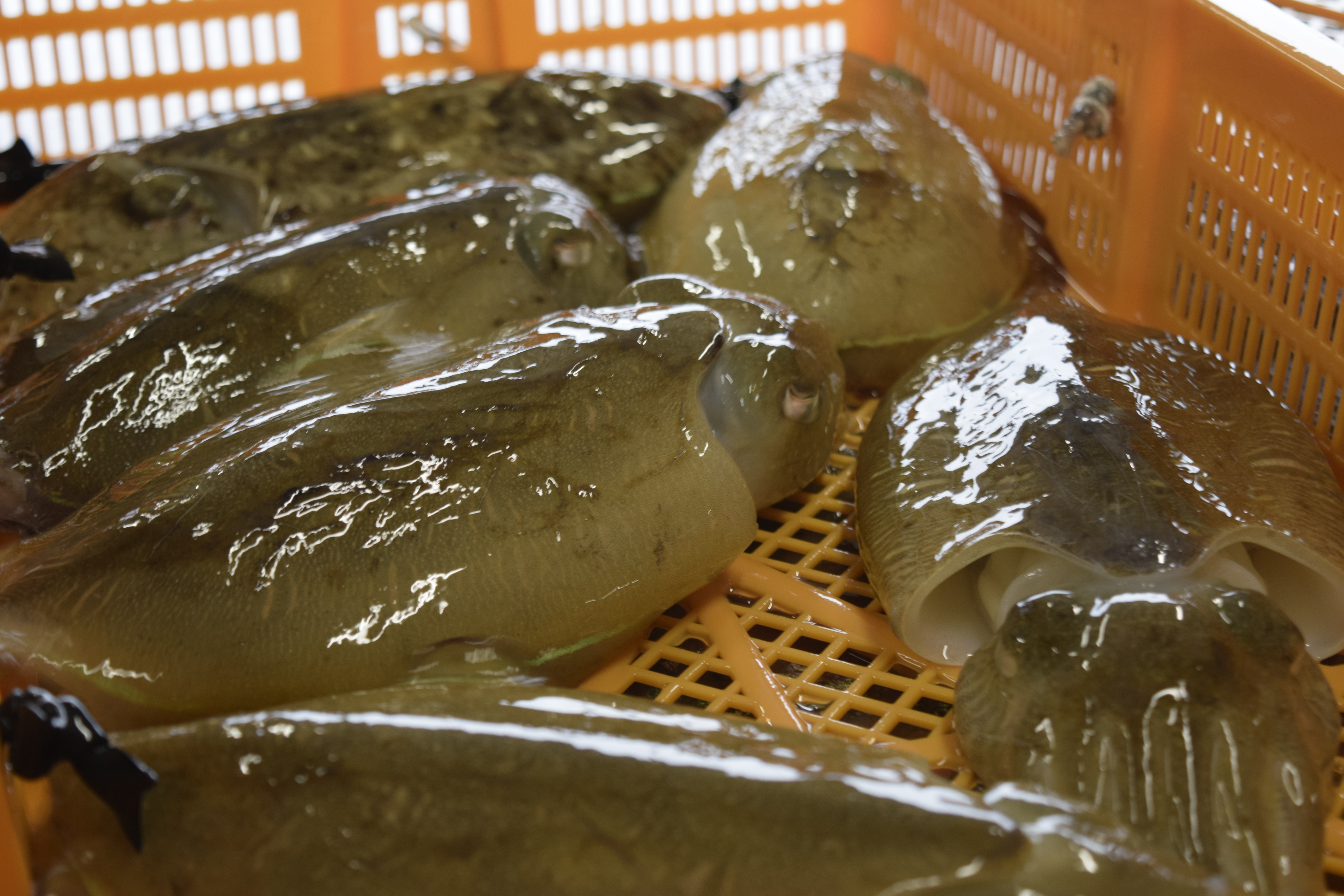
見出し --> 2917, Fuke, Misaki Town, Osaka http://www.fuke-gyokou.com/index.html Auctions for fish caught that day at Fuke Fishing Port start around 3:00 in the afternoon. In front of the auction area is a fish market where anyone can buy fresh seafood. The taste of the fish raised in the rough seas of Kitan Strait is exceptional. You'll want to try it at least once! The market closes on the days before public holidays, weekends, and when the fishing port is closed due to stormy weather, so don’t forget to check before you go.
Manyoshu Monument
![]() Seaside Dining Course
Seaside Dining Course

--> 見出し --> Fuke, Misaki Town, Osaka Long ago, the coast west of this area all the way to modern-day Fuke Port was called Fukei-no-ura, and is a place often written about in waka poetry since the days of the Man’yoshu (the oldest collection of Japanese poetry). This monument was built to commemorate a poem written about Fukei-no-ura in the Manyoshu and is inscribed with the words, "I go to the windy beach of Fukei / and make an offering to the gods / for no one but her". Meaning of the poem: This life, which goes out to the beaches of Fukei where the winds blow and prays for safety by offering rope to the god of the sea, is not for anyone’s sake but hers.
Nagamatsu Beach
![]() Seaside Dining Course
Seaside Dining Course
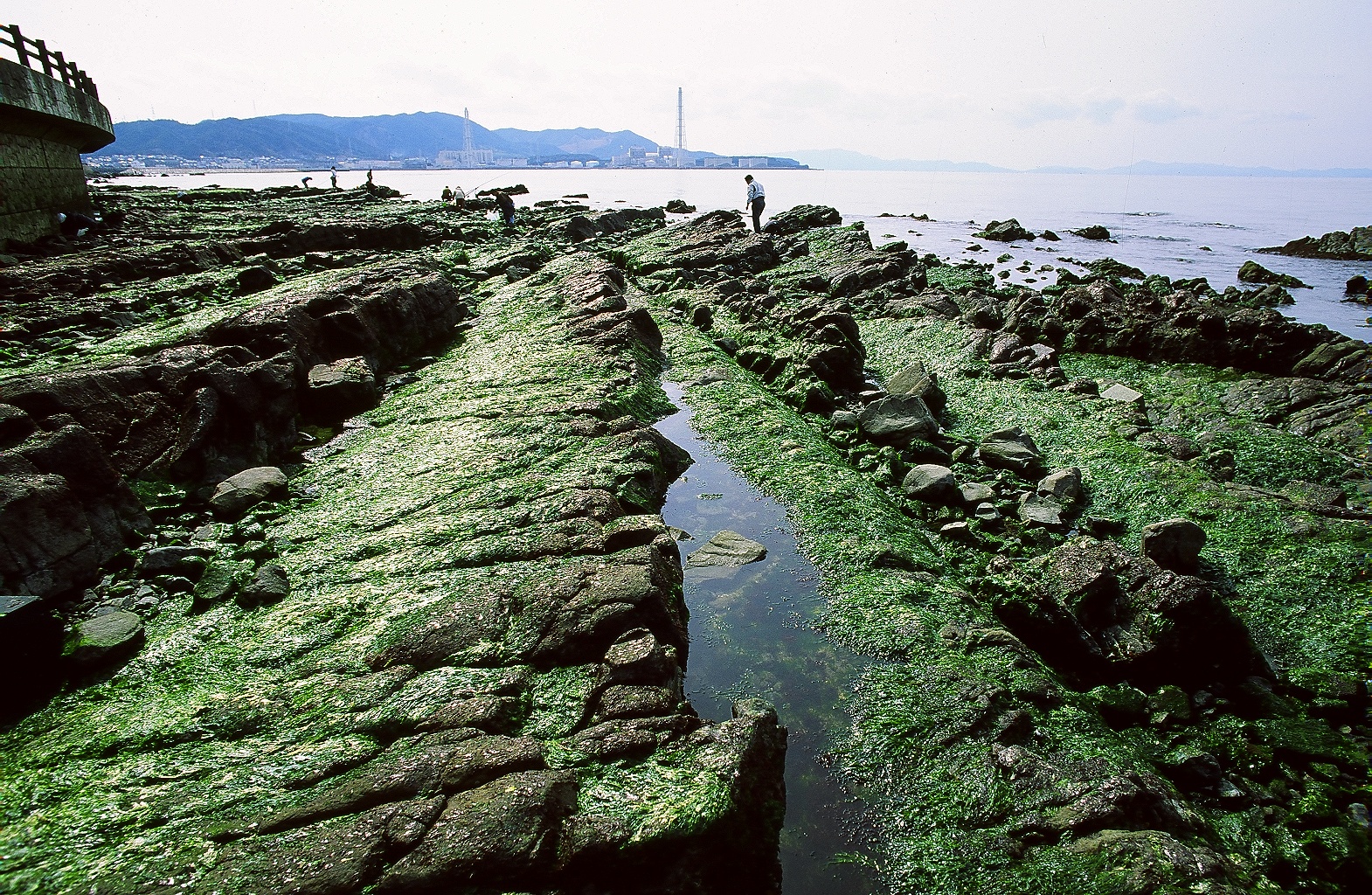
見出し --> Fuke, Misaki Town, Osaka Together with Kojima Beach, this is the only natural beach remaining in Osaka Prefecture. The sunset seen from Nagamatsu Beach, so stunning that it has been selected as one of the “Top 100 Sunset Spots in Japan”, fascinates visitors from all around. The gently curving coastline spans 850 meters, and during low tide, a continuous reef ranging from ten to twenty meters in width appears. The seawater is clear, and people often come to this beach to play.
Tannowa Yacht Harbor
![]() Seaside Dining Course
Seaside Dining Course

見出し --> 6190, Tannnowa, Misaki Town, Osaka https://tannowa-yh.jp/ Tannowa Yacht Harbor Sea Station (Umi-no-Eki) moors as many as 300 yachts (the largest in Osaka), making this harbor a favorite among yachtsmen and fishers in the Kinki region. Within Tannowa Yacht Harbor is a café overlooking Osaka Bay called Land Ho, where you can enjoy a meal while gazing out over the ocean. “Land ho!” is what sailors shouted to each other when they saw land in the old days of the Age of Exploration (15th-17th centuries). Take time and unwind here as you reflect on the sea! Displayed on the first floor of the yacht house is Koraasa 2, the beloved yacht of Ikuo Kashima, the first Japanese man to successfully cross the Pacific Ocean alone.
Osaka Prefectural Youth Marine Center
![]() Seaside Dining Course
Seaside Dining Course
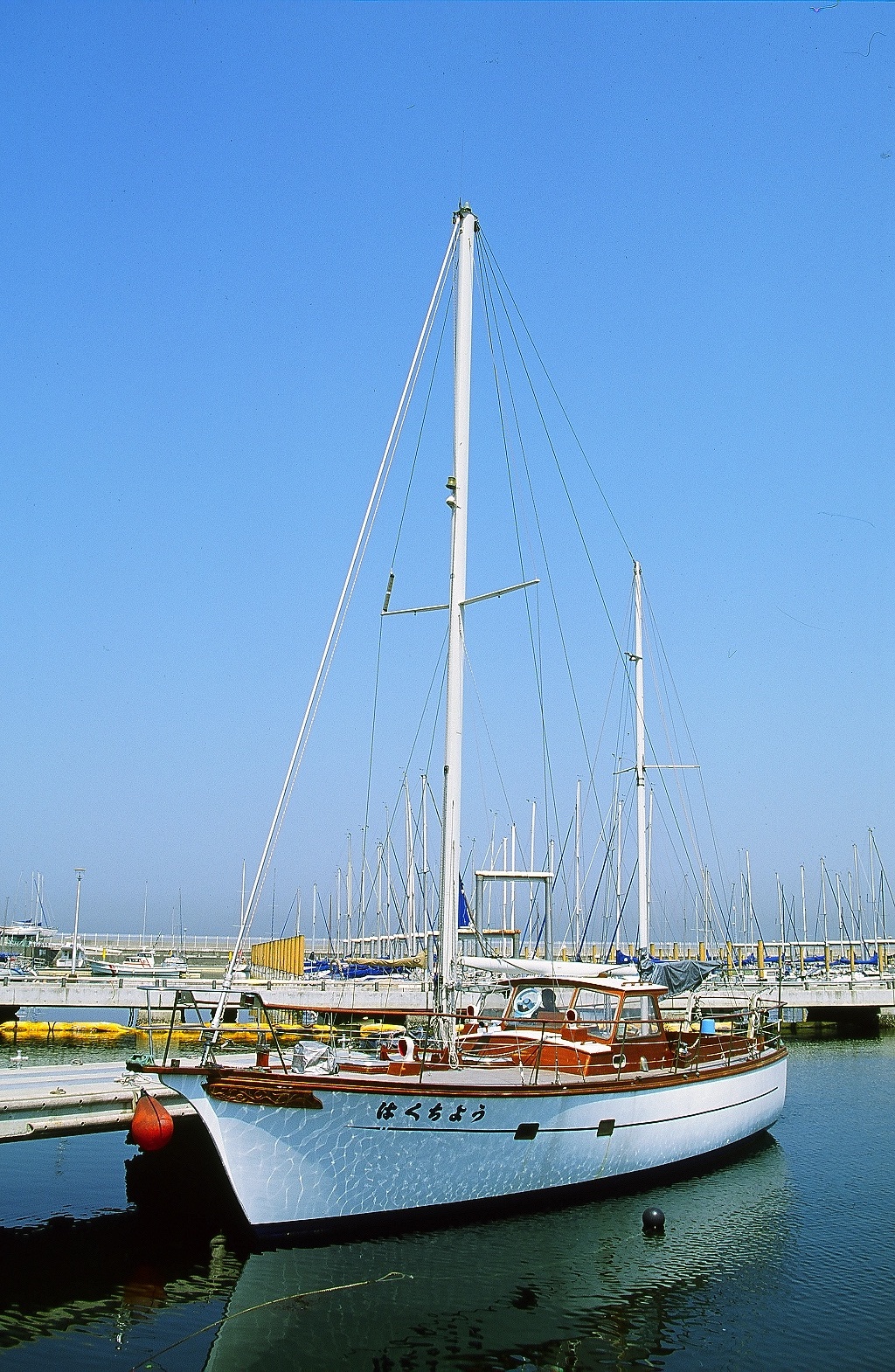
見出し --> 6190, Tannnowa, Misaki Town, Osaka http://www.osaka-kaiyo.com/ Observe sea creatures, play marine sports, and take a seaside stroll amid an abundance of nature. Outside, there are facilities for mini-orienteering and ASE (action socialization experience) as well as sports grounds, barbecue pits, and campfire pits, letting visitors enjoy a variety of activities. This center was established in 1975 to promote youth development and provide a place for wholesome cultural recreation activities that familiarize people with nature. Together with Tannowa Yacht Harbor and Sennan Satoumi Park, this center helps form the base for marine sports and recreational activities in this area. This center offers views of Osaka Bay below that include Awaji Island and the Rokko Mountains, as well as views of jets landing at Kansai International Airport.
Sennan Satoumi Park
![]() Seaside Dining Course
Seaside Dining Course

見出し --> Tannnowa-chisaki, Misaki Town, Osaka https://www.osaka-park.or.jp/rinkai/sennan/main.html A seaside park stretching from the town of Misaki to the city of Hannan. There are facilities such as a playground, a multipurpose plaza, and an artificial pebble beach where you can experience nature. Located within the park is Shiosai Bevolley, the largest permanent beach volleyball arena in Japan, which has a tiled roof and can accommodate 3,000 people. Every summer, this place is home to the All-Japan Women's Beach Volleyball Championships, where you can watch the top players in Japan compete in fierce matches. Enjoy clam digging from mid-April to early June as well as Tokimeki Beach (Tannowa Beach), a beach that opens on July 1st and is famous for its pristine waters that attract many beachgoers.
 Tannowa Walking Course / Seaside Dining Course
Tannowa Walking Course / Seaside Dining Course
Tannowa Station
![]() Tannowa Walking Course / Seaside Dining Course
Tannowa Walking Course / Seaside Dining Course

見出し --> Tannnowa, Misaki Town, Osaka https://www.nankai.co.jp/traffic/station/tannowa.html Tannowa Station opened as a railway stop in 1905. The current station building was built during the Taisho Era (1912-1926) and maintains its retro vibe, making it famous among trainspotters. The station consists of a European-style building that looks like something from a fairy tale topped with a clock tower (the clock has since been removed) as well as stone turnstiles and the remains of a chandelier that still impart the style of the past. Renovation work in 2006 replaced the red roof with a chic black roof. Pass through the ticket gate to find a sprawling space covered by a high polygonal domed ceiling, where some retro light stands still remain. While there is a manned ticket gate, it is currently unmanned.
 Tannowa Walking Course
Tannowa Walking Course
Misakikoen Station
![]() Tannowa Walking Course
Tannowa Walking Course

--> 見出し --> Tannnowa, Misaki Town, Osaka https://www.nankai.co.jp/traffic/station/misakikoen.html
Michi-no-Eki (Roadside Station) Misaki
![]() Tannowa Walking Course
Tannowa Walking Course

見出し --> 5654−3, Tannnowa, Misaki Town, Osaka https://www.michi-no-eki.jp/stations/views/19875 Famous for its fresh fish! This roadside station has gained popularity for its “Fisher’s Market”, where fresh fish caught that morning by fishers in one of the four fishing ports within the town of Misaki are sold directly. The exquisitely fresh fish, including some that can only be tasted locally, is a sight to behold. For those who are not good at carving up fish, there is a free service on-site that will cut the fish you have chosen into three slices for you. Not only is there fish, but there is also fruit such as strawberries, watermelons, melons, peaches, pears, grapes, persimmons, and mandarin oranges from Wakayama, Nara, and Osaka to help you savor the flavors of the season. There is also a range of delicious local vegetables from farmers in Misaki, who take pride in their produce. Visitors can also buy local specialties and souvenirs that can be found only at Roadside Station Misaki.
Nishikoyama Tumulus
![]() Tannowa Walking Course
Tannowa Walking Course

--> 見出し --> Tannnowa, Misaki Town, Osaka A tumulus located near the mountains between the Sairyo Tumulus and the Udo-no-Haka Tumulus with a round section 50 meters in diameter as well as a tsukuridashi (a protruding square platform), a moat, fukiishi(roofing stones), and haniwa (hollow unglazed terra cotta figures). The top section of the burial mound was excavated in 1930, which led to the discovery of a pit-type stone burial chamber with a gravel floor facing east-to-west. In 1980, fifty years after the initial excavation, the Osaka Prefectural Board of Education resurveyed the area and verified that haniwa surrounded the burial mound, and that it had been covered in fukiishi.
Sairyo Tumulus
![]() Tannowa Walking Course
Tannowa Walking Course
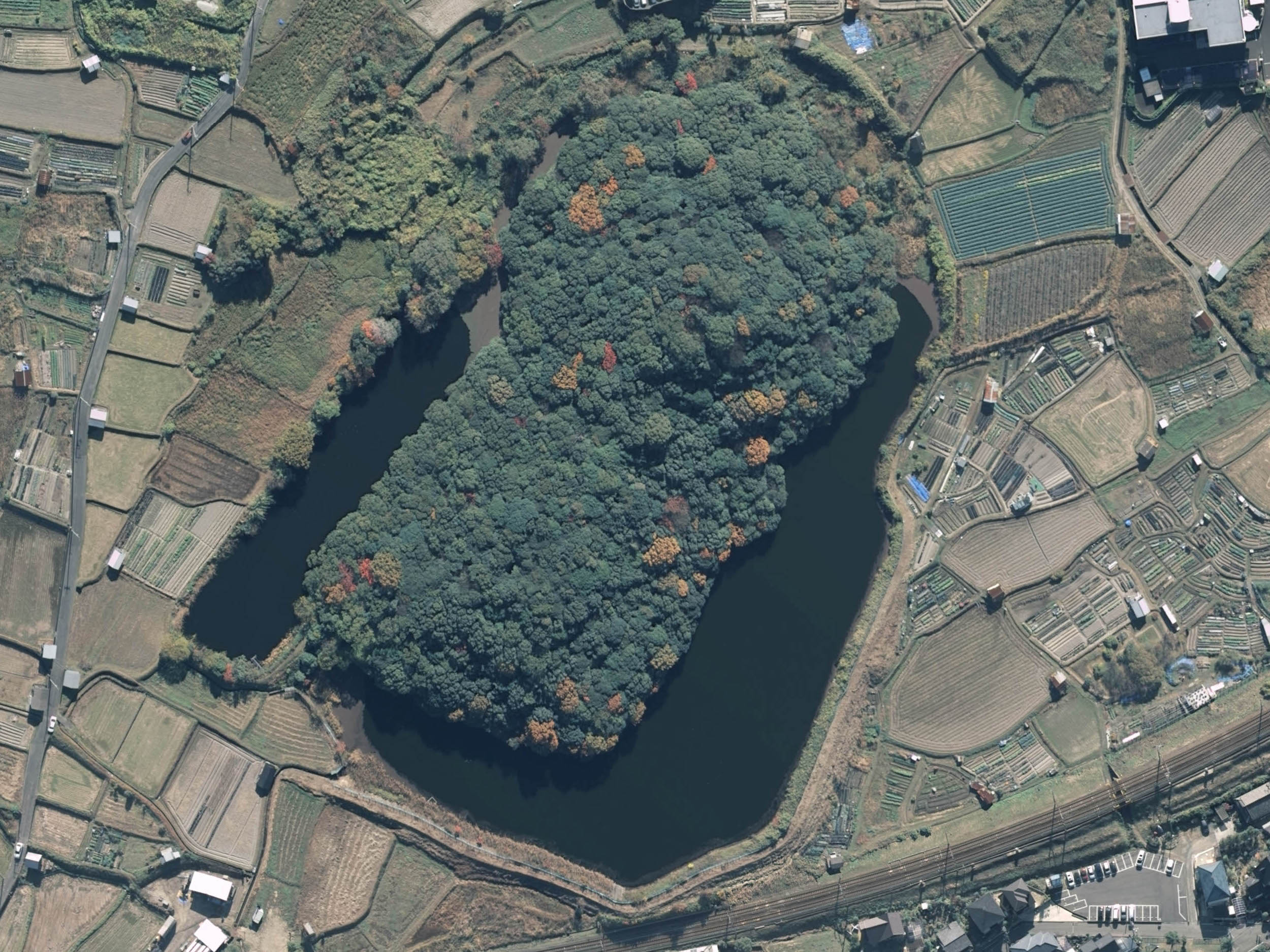
見出し --> Tannnowa, Misaki Town, Osaka Located at the foot of a hill stretching north-to-south on the left bank of Ban River is a massive keyhole-shaped tumulus 210 meters long, 100 meters wide at the top, and 115 meters in diameter at the round section, built in the first half of the 5th century using the edge of the hill. This tumulus is famous for its enormous size as well as its excellent burial facilities and grave goods. The appearance of this tumulus, restored based on its fukiishi (roofing stones) and haniwa (hollow unglazed terra cotta figures), is magnificent as well, as visitors can enter the grounds of this burial mound and walk around. The top portion faces northeast and a square structure known as a tsukuridashi remains on the north side of the narrow section, which visitors can walk over to and see for themselves. There is a moat surrounding the perimeter and two tumuli next to each other on the outside of the northern moat. Once the cover stone of an oblong stone sarcophagus lay exposed on the top of the round section of the tumulus, and so this is thought to have once contained a sarcophagus.
The Muku Tree (Aphananthe Aspera) of Haraito
![]() Tannowa Walking Course
Tannowa Walking Course

見出し --> Tannnowa, Misaki Town, Osaka This tree is located about 100 meters south of Funamori Shrine. With a stone shrine near its roots, it has protected this area as Haraitonoza Shrine. It stands 25 meters tall and has a trunk circumference of 10 meters. This tree was designated a natural monument by Osaka Prefecture in March 1973. This was once the location of Butsuden-za Shrine, where originally there was a stone staircase leading from the muku tree to the main shrine. During that time, the precincts were surrounded by stone and earthen walls, and there were other giant trees such as pine and camphor in addition to the muku tree. However, these were cut down during the war, and now only the stone shrine and muku tree remain as reminders of the past. The tall, slender branches reaching toward the heavens are green and refreshing, a soothing sight for the eyes.
Funamori Shrine
![]() Tannowa Walking Course
Tannowa Walking Course

見出し --> 4442, Tannnowa, Misaki Town, Osaka According to legend, this shrine was founded in 911 by an imperial decree of Emperor Daigo, but the details of this are unknown. The current main shine features chidori (“plover”) gables on a cypress bark roof built in the sangensha nagare-zukuri (“four-pillared flowing roof”) style and was built by Katagiri Katsumoto at the behest of Toyotomi Hideyori. This retains the architectural style of the Momoyama Period (1583-1600) and was designated as a National Important Cultural Property in 1924. Within the precincts, the trunks of four camphor trees have merged into a single enormous camphor 25 meters tall with a circumference of 10 meters, a sacred tree of this shrine said to be more than 800 years old. This tree was designated a natural monument by Osaka Prefecture in March 1973. Every October, a spectacular festival featuring a procession of five yagura (festival floats) is held.
Tsuki-no-Miya (Miyaza ("Parish Guild")
![]() Tannowa Walking Course
Tannowa Walking Course

見出し --> Tannnowa, Misaki Town, Osaka A miyaza ("shrine guild") refers to a privileged organization within a village involved in the rituals of the shrine to the local tutelary god or clan deity as well as to the group of qualified people who make up this organization, and has been commonly found in Western Japan since the early modern period. The origins of the miyaza are ancient and believed to stem from rice-related rituals that took root throughout the Middle Ages. Characteristic of this system is that there are no full-time priests; rather, members of the miyaza take turns as the toya, or head of the shrine, rotating each year. Enshrined by the miyaza here is the god Tsukuyomi, the younger brother of the goddess Amaterasu Omikami appearing in both the Kojiki (Japan's oldest historical record) and the Nihonshiki ("Chronicles of Japan"). Amaterasu Omikami is associated with the sun, while Tsukuyomi is associated with the moon.
Udo-no-Haka Tumulus
![]() Tannowa Walking Course
Tannowa Walking Course

見出し --> Tannnowa, Misaki Town, Osaka Also known as the "Imperial Tomb (go-ryo-san)”, Udo-no-Haka Tumulus is a large, keyhole-shaped tumulus built in the latter half of the 5th century on the north terrace of the right bank of Ban River. It is 170 meters long, 120 meters wide at its top, and 110 meters in diameter at the round portion. Square structures called tsukuridashi still remain on either side of the mound at the narrow section. Six mounds (round and square) still remain on the outer moat of the round section, which are thought to be smaller mounds called baizuka associated with the main mound. While visitors may not enter the tumulus because it is currently under the management of the Imperial Household Agency as the imperial mausoleum of Prince Inishikiirihiko, the second son of Emperor Suinin, the moat reflecting scenery that changes with the seasons makes this the perfect place for a scenic stroll.
 Historical Route Course / Katsuragi Shugendo Course
Historical Route Course / Katsuragi Shugendo Course
Fukecho Station
![]() Historical Route Course / Katsuragi Shugendo Course
Historical Route Course / Katsuragi Shugendo Course

--> 見出し --> Fuke, Misaki Town, Osaka 営業時間--> 定休日--> TEL--> 料金--> アクセス--> 自由項目--> 自由項目--> 自由項目--> 自由項目--> https://www.nankai.co.jp/traffic/station/fukecho.html リンク表記名 --> リンク表記名 -->
Tanagawa Station
![]() Historical Route Course / Katsuragi Shugendo Course
Historical Route Course / Katsuragi Shugendo Course

--> 見出し --> Tanagawa-tanigawa, Misaki Town, Osaka https://www.nankai.co.jp/traffic/station/tanagawa.html
 Historical Route Course
Historical Route Course
Shinminato
![]() Historical Route Course
Historical Route Course

--> 見出し --> Tanagawa-tanigawa, Misaki Town, Osaka In May of 1685, under the reign of the feudal lord Tsuchiya Masanao, Nagahara Akizuki and Kurobe of Tanikawa village requested the development of Port Shinminato, permission for which was granted the following year. Funds were provided by Nadaya Rihe and construction undertaken by Fujiya Kyuzaemon of Teramachi, Kyoto. In March 1689, after three years of work starting in 1687, the Port Shinminato was completed, with a size of about 218 meters long and about 40 meters wide. With a ship entrance roughly 16 meters wide, it was considerably larger than the old port. Nagahara Akizuki, the owner of the port, collected one silver per one-tenth hectare of sail from each cargo vessel entering the port, but management rights were transferred when Kameya Zen’emon purchased Shinminato. The surrounding area was developed at the same time that Shinminato was constructed.
Port Construction Monument
![]() Historical Route Course
Historical Route Course

見出し --> Tanagawa-tanigawa, Misaki Town, Osaka Located at the entrance to Osaka Bay, Port Tanigawa has flourished as a port of refuge from wind and waves as well as an intermediary between Awaji and Shikoku. While the port originally used the natural inlet of Toyokunizaki on the opposite shore, it eventually got buried beneath sediment despite countless attempts at repair, making it difficult to use. Around 1685, construction of the new port of Shinminato commenced under the supervision of Nagahara Akizuki, the former feudal lord of Aki Province, and on contract with a wealthy merchant from the Kyoto-Osaka area. It took several years to build the port as it is today. This monument was erected in 1921 by local volunteers, commissioned by Osaka Governor Tokikazu Ikesue, and on its back are inscriptions honoring the achievements of Nagahara Akizuki and Kameya Zen'emon.
Richiin Temple
![]() Historical Route Course
Historical Route Course

見出し --> 1523, Tanagawa-tanigawa, Misaki Town, Osaka Official Website "This temple is said to have been founded in 733 by the priest Gyoki at the behest of Emperor Shomu. Legend has it that the principal image of Fudo Myo-o was made by Kobo Daishi and is a “secret Buddha” (Buddhist image normally withheld from public view). This temple contains the statue “Hideyoshi Aged 57”, donated by Toyotomi Hideyoshi after he made a safe voyage through the grace of Fudo Myo-O’s tailwinds, as well as calligraphy entitled “Toyotomi Daimyojin”, made by Toyotomi Hideyori at the age of 8, and many other Buddhist artifacts. More recently, the naturalist Minakata Kumagusu used this place as a site of research for quite some time. All kinds of flowers grow on the precincts throughout the year, offering a sense of serenity. There are monthly events such as sutra copying and Buddhist image tracing, so why not try these activities as you reflect on yourself and experience soothing of all your senses at a quiet mountain temple surrounded by greenery? " (Check dates and time on the official website)
Kozen-ji Temple
![]() Historical Route Course
Historical Route Course

見出し --> 1460, Tanagawa-tanigawa, Misaki Town, Osaka Official Website Legend has it that this temple was built in 852 by Jikaku Daishi at the behest of Emperor Montoku. The spacious temple grounds had a Shichido Garan (seven halls composing the ideal Buddhist temple compound) and was revered by the villagers, but it burned down around 1570 due to warfare during the Shokuho Period (1568-1600). The principal image was thrown into a lotus pond by a monk to save it from harm, and was rebuilt around 1690. The rebuilt version exists to this day. This principal image, a seated Dainichi Nyorai Buddha and its flanking statues of the Shaka Buddha and the Yakushi Nyorai Buddha were designated as National Important Cultural Properties in 1926. The Dainichi Nyorai Buddha is the largest Buddhist statue in town and is also known as the "Great Buddha of Misaki". Events such as sutra copying and Zen meditation are held as well, so feel free to give it a try! (Online reservation required, check dates and times)
Joken-ji Temple
![]() Historical Route Course
Historical Route Course

見出し --> 224, Tanagawa-tanigawa, Misaki Town, Osaka This temple belongs to the Seizan Joto Sect, and its principal image is a standing statue of the Amida Buddha. Standing in a place where disputes over the rights to the Kisen Border were constant, between the villages of Nishihata, Higashihata, and Tanigawa and villages on the Kishu side of the border such as Kinomoto and Nishinosho, this temple was founded by the priest Takuken of Kajitori Soji Temple, who served as an arbitrator, and is believed to date back to the mid-Tenbun era (1532-1555). Buddhist artifacts held by this temple include the principal image of the Amida Buddha and the flanking Buddhas, believed to have been created in the 13th century, as well as the Taima Mandala depicting the western Pure Land, with the names of hundreds of donors who helped with repairs written on the back. The framed plate (sign) showing the honorific mountain name prefixed to a temple's name was written by Ri Baikei, a Confucian scholar of the Kishu-Tokugawa Clan.

--> 見出し --> Tanagawa-tanigawa, Misaki Town, Osaka While Port Tanigawa had long been used as a natural harbor, a feudal lord named Kuwayama Shigeharu upgraded the port in 1603. This is Kominato, or the "Old Port". According to historical records from 1840, it was about 109 meters in length, 36 meters wide, and had a boat entrance of about 4.5 meters. The port was used by the Hachisuka Clan of the Awa-Tokushima Domain as well as the Yamauchi Clan of the Tosa-Kochi Domain during sankin kotai, a system under which feudal lords in the Edo Period (1603-1867) were required to spend every other year in residence in Edo (present-day Tokyo). They would dock their ships here during bad weather or when waiting for the tide, and would sometimes go ashore to spend the night.
Ubusuna Shrine
![]() Historical Route Course
Historical Route Course

見出し --> 1462, Tanagawa-tanigawa, Misaki Town, Osaka While it is uncertain when this shrine was founded, it is thought to have been built as Shinto shrine on Buddhist temple grounds dedicated to the tutelary deity when Kozen-ji Temple was constructed in 852. The enshrined gods were Izanagi-no-Mikoto and Kanayamahiko-no-Kami , but in 1313, a ceremony to transfer the gods Kumano Gongen, who appeared at Tanigawa and Nishihama, and Zao Gongen, who had been enshrined in Nishimura, was performed, and the shrine was dedicated to these multiple deities. In 1580, the shrine, along with Kozen-ji Temple, was burned down in fire caused by warfare, but was rebuilt soon after. There is a rare guardian lion-dog made of tile within the precincts.
Hoju-ji Temple
![]() Historical Route Course
Historical Route Course

見出し --> 3175−5, Fuke, Misaki Town, Osaka Also called the “Temple of the Fossil”, this temple has on display a fossil of a Naumann's elephant discovered off the coast of Tomogashima as well as celadon porcelain from China and stone jars from Izumi, and legends related to Princess Fuku of the Saijo Clan in Shikoku remain here along with a monument. Call if you would like to take a tour.
Kunitama Shrine
![]() Historical Route Course
Historical Route Course

見出し --> 1467, Fuke, Misaki Town, Osaka This is the only shrine listed in the Engishiki (set of ancient Japanese governmental regulations) in the town of Misaki. The current main hall was dismantled and relocated from its original location in Kamo Shrine and features copper roofing in the nagare-zukuri (streamlined) style with beams 7.2 meters long and girders 5.4 meters long. The large torii gate has a tile placard, a reminder of a time when the tile industry flourished. On the east side of the torii gate stands a monument marking the site of temporary lodging built to accommodate Empress Shotoku during her Imperial visit to Kishu. The gods enshrined here are Okuninushi (the god of nation-building) and Kamo Wakeikazuchi no Okami (the god of lightning).
Konjo-ji Temple
![]() Historical Route Course
Historical Route Course

見出し --> 733, Fuke, Misaki Town, Osaka This is a branch temple of Jodo Shinshu Honganji-ha Sect of Buddhism (head temple: Nishi Honganji Temple) established in 1325. Priest Rennyo, the 8th head priest of Honganji, stayed here in 1486 and bestowed a new honorific mountain name and temple name, Kakuryu-san Konjo-ji Temple. Priest Kennyo, the 11th head priest of Honganji, stayed here for five days and nights starting April 4, 1580, during the Ishiyama Hongan-ji War. This temple defended against Oda Nobunaga’s forces at Haibuki Pass and protected Honganji, and later became “Go-Kentaijo”, a place where the head priest Kennyo served concurrently. In 1819, it became "Fuke Gobo" (monk's quarters). The temple precincts are home to an enormous ginkgo tree approximately 550 years old, which has been designated a natural monument by Osaka Prefecture, and were named one of the “Top 100 Places for Greenery in Osaka”.
Misaki Town Building and Community Center
![]() Historical Route Course
Historical Route Course

見出し --> 3400–6, Tanagawa-tanigawa, Misaki Town, Osaka https://atsukonda69.wixsite.com/website An old Japanese-style home (kominka) named "Misaki-no-Hitofuku". Used as an office for staff involved in community revitalization since 2018, this facility has rental spaces and shared kitchens that provide a place for townspeople and visitors to come together, and is also being used as a place to try to create new livelihoods that bring together human resources from inside and outside of town to work together on start-ups. A variety of dining establishments are open for about half the month, letting guests break away from the everyday to enjoy lunch or tea in a tranquil atmosphere.
 Katsuragi Shugendo Course
Katsuragi Shugendo Course
The Tomb of the Daughter of Tachibana no Hayara
![]() Katsuragi Shugendo Course
Katsuragi Shugendo Course

見出し --> 805, Kyoushi, Misaki Town, Osaka Tachibana no Hayanari (unknown - 842) was a government official in the early Heian Period (794-1185) who went to China as an envoy to the Tang Dynasty, and was called "Tachibana the Prodigy" in Tang literary circles. Also known for his superb calligraphy, in particular his clerical script, Tachibana was one of the three most famous calligraphers in Japan along with Emperor Saga and the monk Kukai. Tachibana was implicated in a controversy over imperial succession known as the Jowa Incident and died in 842 at Hozuki Station in Totomi Province on his way to exile in Izu Province. Mourning his death, his daughter Ayame became a Buddhist priestess and changed her name to Myocho, then returned to Kyoto with Tachibana’s body. Because of this, Ayame is sometimes called "the filial daughter". The story of Tachibana’s courageous daughter is written in the official history Montoku Jitsuroku as well as in the Hosshinshu ("Tales of Awakening"), a collection of Buddhist tales.
The Tomb of Tachibana no Hayara
![]() Katsuragi Shugendo Course
Katsuragi Shugendo Course
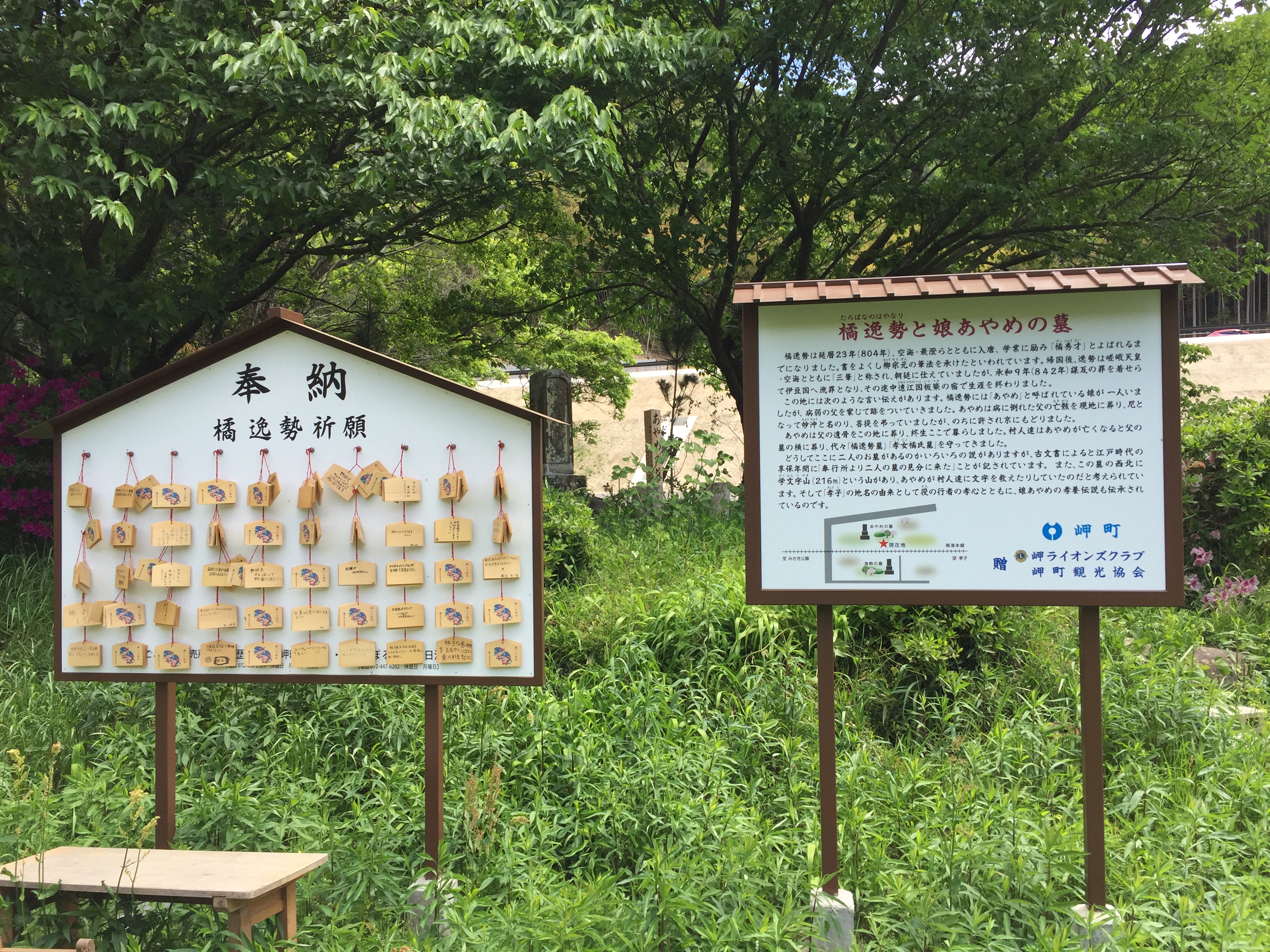
見出し --> 805, Kyoushi, Misaki Town, Osaka This temple belongs to the Jodo Shinshu Honganji-ha Sect, and its principal image is a standing statue of the Amida Buddha. The details of this temple, said to have been restored by the monk Masaaki on March 18, 1486, are not well known, but on March 12 of the same year, the 8th generation head priest of the Jodo Shinshu sect Rennyo stayed at Konjo-ji Temple in Fuke during his pilgrimage to Kishu. These two things may be related. According to records in Eko-ji Temple in Naka-Kyoshi, torrential rains in the summer of 1851 created great damage and that “the cloister surrounding the main hall and the temple bell were washed away.” The main hall was rebuilt in April 1856, meaning it is about 170 years old.
Misaki History Museum
![]() Katsuragi Shugendo Course
Katsuragi Shugendo Course

見出し --> 498, Kyoushi, Misaki Town, Osaka http://www.town.misaki.osaka.jp/soshiki/kyouiku_iinkai/shogai/shogai/813.html This museum was built in the former Kyoshi Elementary School. Kyoshi Elementary School was founded on October 27, 1876, but closed in March 1993 due to a declining population of children. It was turned into a history museum with the support of locals, opening on March 21, 2011. To pass down the history of the town of Misaki, this museum displays historical materials and books, artifacts found in Misaki, and Tanigawa roof tiles that were once produced in high volume in Misaki. History workshops and events are held regularly, so be sure contact the Lifelong Learning Section of Misaki Town Hall for details (TEL: 072-492-2715).
Jigen-in Temple
![]() Katsuragi Shugendo Course
Katsuragi Shugendo Course

見出し --> Tanagawa-nishibata, Misaki Town, Osaka https://katsuragisyugen-nihonisan.com/ This is the second of twenty-eight sacred sites in Katsuragi established by En no Gyoja, revered as the founder of Shugendo, a Japanese mountain faith. Enshrined within is a Kannon statue, a “secret Buddha” usually hidden from public view, which is believed to have been carved by En no Gyoja himself. The Jizo Temple Hall next to the main hall was once a hall to Kannon, and contains a statue of Jizo (a bodhisattva who looks over children, travelers and the underworld) inscribed with the era name Tensho (1573-1592), while the temple bell is from the Genroku Era (1688-1704). This place is known locally as "Kannon-ji Temple".
Former Shinpuku-ji Temple (Sutra mound #2)
![]() Katsuragi Shugendo Course
Katsuragi Shugendo Course
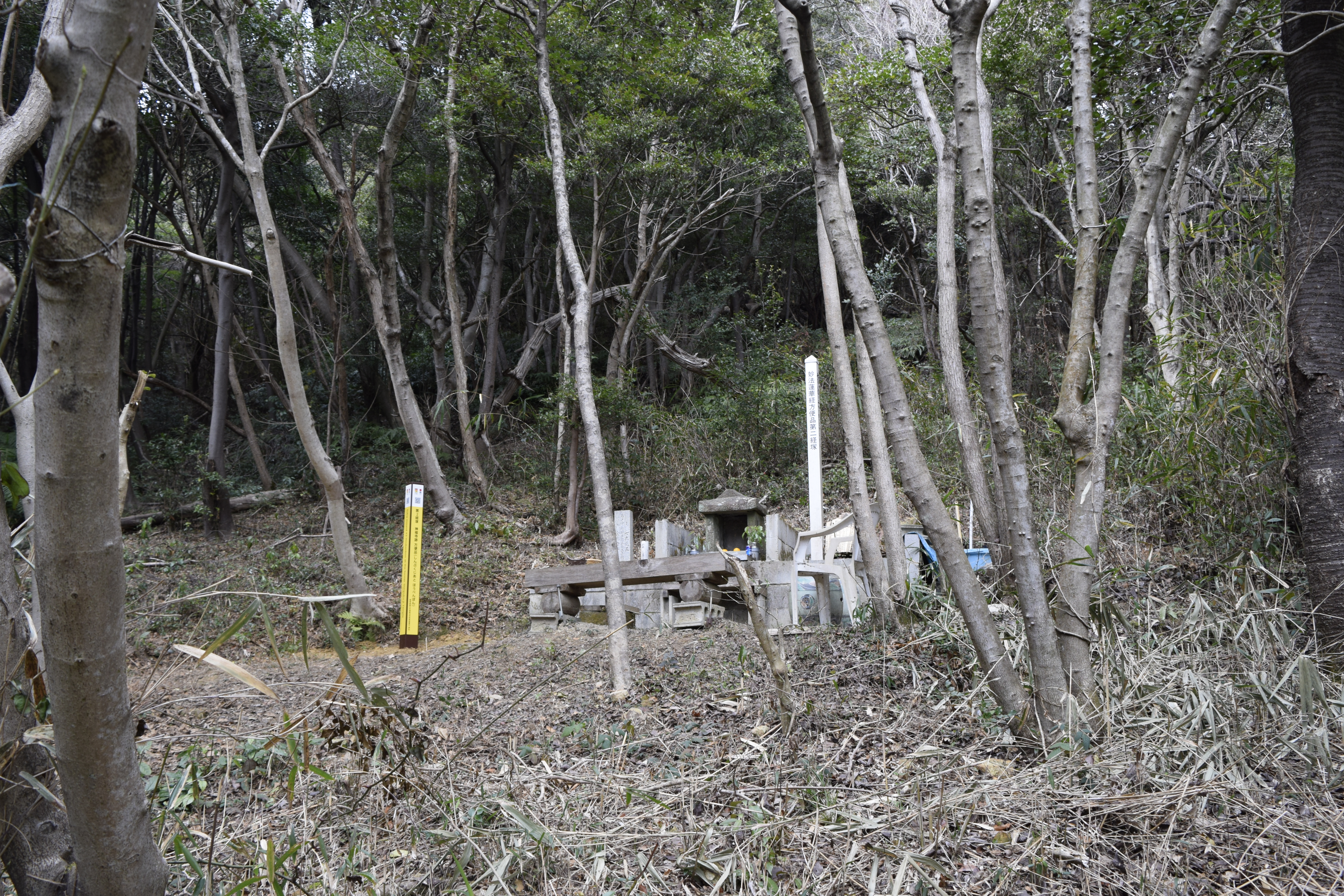
見出し --> Tanagawa-nishibata, Misaki Town, Osaka 営業時間--> 定休日--> TEL--> 料金--> アクセス--> 自由項目--> 自由項目--> 自由項目--> 自由項目--> https://katsuragisyugen-nihonisan.com/ リンク表記名 --> リンク表記名 --> The Katsurei-Zakki (a guidebook on Katsuragi Shugen published in 1850) states that Shinpuku-ji Temple had "an Eleven-Faced Kannon Bodhisattva statue, a stone on which En no Gyoja meditated, a pond called Zennyoga-ike, a hall dedicated to the founder of the sect with a mound on its side, and the second Myouhou Benhon Pond." A shrine made of Izumi sandstone stands near the pond of the former site of the priests’ quarters, and this is believed to be Sutra Mound Number Two.
Kosen-ji Temple
![]() Katsuragi Shugendo Course
Katsuragi Shugendo Course
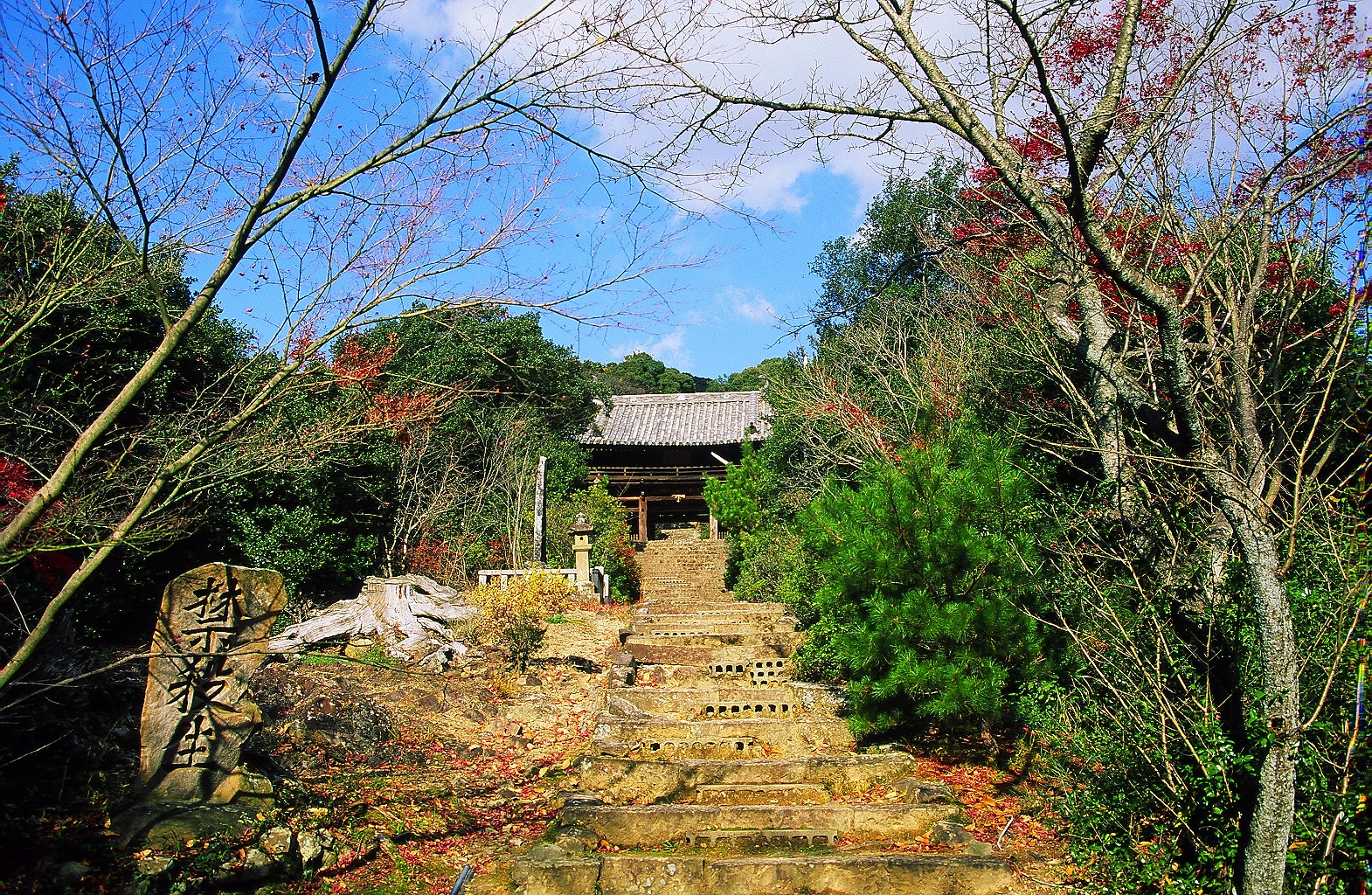
見出し --> 1464, Kyoushi, Misaki Town, Osaka https://katsuragisyugen-nihonisan.com/ Kosen-ji Temple is one of the temples that comprise the fourth sacred site among the twenty-eight sacred sites of Katsuragi. Located at the foot of Mount Takanoyama, this temple is known by locals as “Kannon-san of Kyoshi.” The principal image is an eleven-faced Kannon Bodhisattva said to have been made by En no Gyoja, and because this is a “Secret Buddha” normally hidden from public view, a replica has been placed in front of the miniature shrine. Within the precincts are a hall dedicated Gyoja and a stone monument engraved with writing about the twenty-eight Katsuragi sutra mounds called the Jyuei Kyozuka Himei. Behind the main hall is a stone shrine with a statue of En no Gyoja and a stone pile said to be the tomb of En no Gyoja’s mother.